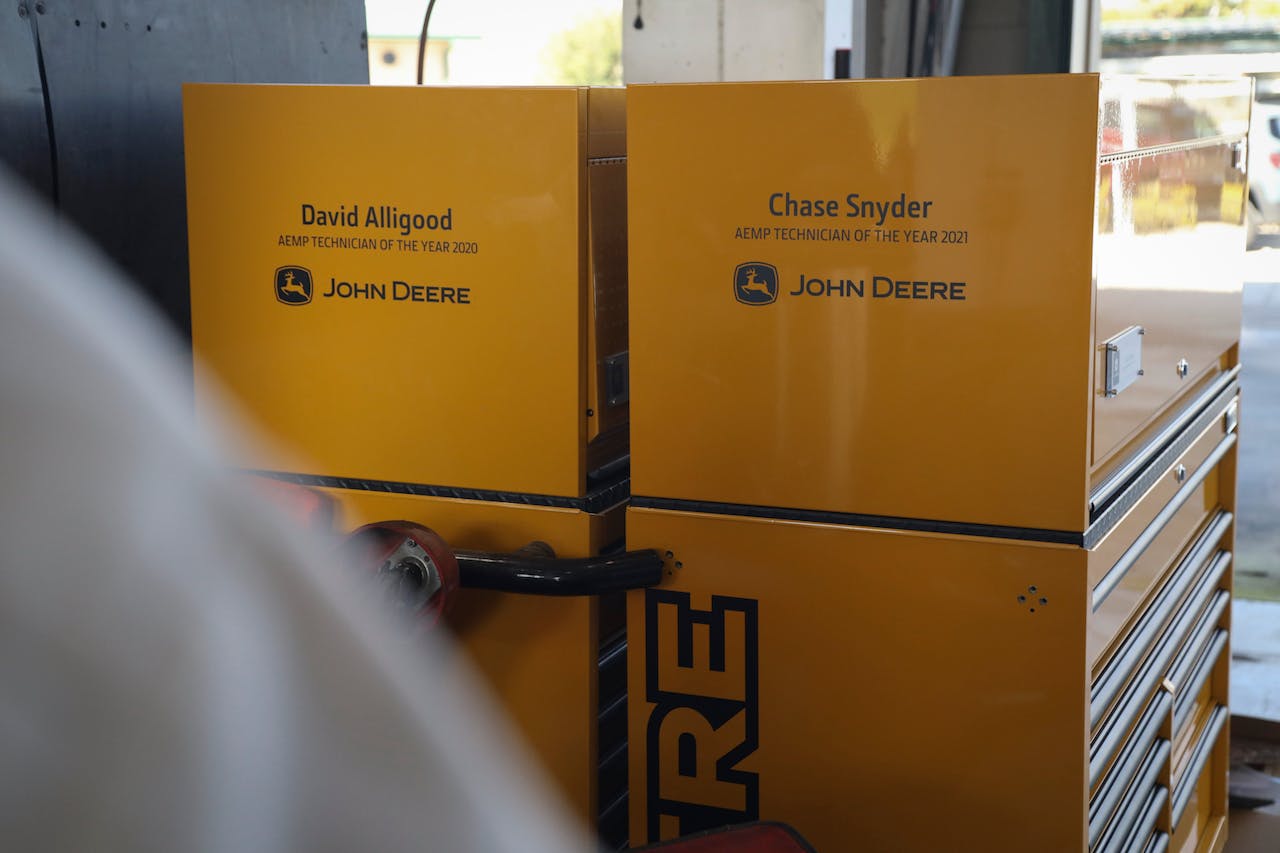Some 20 years ago ASV showed the world a new kind of rubber track system that used oscillating bogie rollers in an undercarriage that practically floated over the ground. This type of machine came to be known as the compact track loader, and while ASV has changed hands several times, they’ve continued to innovate and refine the concept.
Yanmar acquired ASV in 2019, and fittingly the new ASV RT-40 is powered with a Yanmar engine rated at 38.2 horsepower. “The Yanmar engine is an ASV engine,” says Buck Storlie, product manager, “and it is fully serviceable at Yanmar or ASV dealers.”
The small frame loader features a 48.3-inch width, an 8.4-foot lift height, a 931-pound operating capacity and a 7.1 mph top speed. And like all ASV CTLs the RT-40 offers high tractive effort, low ground pressure and lots of pushing and digging power thanks to ASV’s Posi-Power system. With its 4,000-pound weight and maneuverability, the RT-40 will be a staple in the rental market and ideal for landscapers and contractors who want to get in and out of narrow spaces and passages to backyards, says Storlie.
ttachment range
The RT-40’s quick-attach fits a variety of attachments and works with an optional adaptor plate for full-sized or walk-behind/stand-on loader attachments. In addition, the loader’s compact size and weight allows it to be conveniently towed behind a 1/2-ton pickup truck.
The RT-40 comes standard with variable auxiliary hydraulic flow and can operate efficiently at a high auxiliary circuit flow rate, powered by 13.3-gpm of pump capacity and 3,000 psi of system pressure. Labor-intensive belt servicing is eliminated thanks to ASV’s use of a direct drive pump. This, along with the machine’s large line sizes and hydraulic coolers, transfer more flow and pressure directly to the attachment to help prevent power loss.
Built tough
ASV engineered the RT-40 for durability and reduced maintenance. It features a heavy-duty frame and metal-face seals on the front and back to ensure the drive hubs do not require maintenance for the life of the machine. The new wiring harness is routed for additional durability and the drive hose routing and chassis sealing are designed for reduced rubbing, fewer line breaks and boosted longevity.
An optional bumper or bumper and limb riser help protect the machine in tough applications, such as rental use. When it’s time for maintenance, the rear-tilting hood offers easy access to filters, oil and fuel tank reservoirs, hydraulic and water separator drains and the battery.
A new frameless front door includes a floor-to-ceiling glass area, allowing operators to better see their work, bucket edges and attachments. The cab’s large side and rear windows provide additional lines of sight. Rear LED lights and adjustable front pedestal lighting add visibility to the worksite at dusk, dawn or anytime visibility is poor. An optional backup camera is available to replace the standard rearview mirror for additional visibility and safety.
Go-anywhere track
Some OEM CTLs use the same chassis as their skid steers, but ASV designs its Posi-Track and skid-steer loaders independently to maximize the benefits of the undercarriage system. The RT-40’s dedicated frame enjoys a 10.8-inch ground clearance to carry it over rocks, logs, stumps and other obstacles. With just 3.5 psi ground pressure, the RT-40 can roll across turf and other sensitive or landscaped surfaces with minimal impact while also maintaining enough flotation to work on soft or boggy ground that would sink a typical skid steer. The wide, flexible track reduces the risk of track derailment.
A new single-side lap bar borrowed from ASV’s larger Max series machines improves entry and exit and gives operators extra space in the cab. The cab is pressurized to keep out dust and offers optional heat and air conditioning.

ASV’s new line of attachments will include the most popular tools first followed by additional releases later.ASV
SV-branded attachments
Along with the RT-40, ASV debuted a new line of its own attachments. The initial launch will include the most commonly used tools such as buckets, pallet forks, grapples, brush mowers and receiver plates, says Frank Gangi, product manager for attachments. The attachments are performance-matched for all the companies tracked and skid steer loaders.
The benefits of dedicated attachments for dealers and customers are that the ASV dealer will become a one-stop shop, with customers able to get both the loader and the factory-direct attachments, parts and service from one location. “The attachments will fit and perform as intended and be plug-and-play so they can be productive right out of the gate,” says Gangi. This also makes financing easier with customers able to combine the machine and the attachments and take advantage of special offers, he says.
The new ASV buckets will have bolt-on cutting edges. Also available are tooth buckets and tooth bars for extra digging power. Light material buckets for snow and mulch are available up to 96” wide. And ASV’s 4-in-1 multi-purpose buckets range from 48 to 72 inches wide.
With capacity up to 6,200 pounds, ASV Pallet forks will offer tines from 36- to 48-inches long. Grapple rakes and grapple buckets will measure 48- to 72-inches wide. Brush mowers will likewise offer widths of 48 to 72 inches. And Receiver hitch plates for moving trailers quickly and easily, are available for ASV or standard ISO mount.
The company will be launching additional attachments in phases based on dealer and customer feedback, says Gangi.
Did you miss our previous article…
https://www.cityheartsaberdeen.com/?p=1027

































